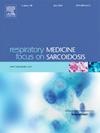两周心率变异性测量和肺部健康:ARIC研究的横断面分析
IF 3.1
3区 医学
Q2 CARDIAC & CARDIOVASCULAR SYSTEMS
引用次数: 0
摘要
背景:心率变异性(HRV)是自主神经功能的测量指标,与肺功能恶化和呼吸健康状况恶化有关。使用来自社区队列的数据,我们旨在测试HRV是否与肺功能和自我报告的慢性肺病(CLD)相关。方法:社区动脉粥样硬化风险(ARIC)研究是一项以社区为基础的队列研究,收集了14天连续ECG贴片的HRV测量数据和第6次就诊时自我报告的CLD(2016-2017)。在就诊前进行肺功能检查(就诊5;2011-2013)。我们使用多元线性回归来检验心率变异和肺功能之间的横断面相关性,并使用逻辑回归来检验心率变异和自我报告的CLD之间的相关性。所有分析都针对吸烟、人口统计学和药物等重要混杂因素进行了调整。结果:对1456名参与者进行了HRV和肺功能测量。纳入的参与者平均±标准差(SD)年龄为78.7±4.5岁,59.6%为女性,30.1%为非洲裔美国人。反映总HRV的较高HRV(正常RR区间的标准偏差)和交感神经活动[低频(LF)与高频(HF)之比(LF/HF)]与较好的肺功能和较低的自我报告CLD的几率相关。反映副交感神经功能(HF)的较高HRV与较差的肺功能和较高的自我报告CLD的几率相关。结论:我们证实了HRV与呼吸健康结局之间的关联。我们来自社区队列的数据表明,在分析呼吸健康结果时,利用几种HRV测量来捕获自主神经功能的多个组成部分的重要性。本文章由计算机程序翻译,如有差异,请以英文原文为准。
Two-week heart rate variability measurements and lung health: a cross-sectional analysis in the ARIC study
Background
Heart rate variability (HRV) is a measure of autonomic function that has been associated with worse lung function and worse respiratory health. Using data from a community-based cohort, we aimed to test if HRV is associated with lung function and self-reported chronic lung disease (CLD).
Methods
The Atherosclerosis Risk in Communities (ARIC) study is a community-based cohort that collected HRV measurements from 14-day continuous ECG patches and self-reported CLD at visit 6 (2016–2017). Pulmonary function testing was performed a prior visit (visit 5; 2011–2013). We used multivariate linear regression to test cross-sectional associations between HRV and lung function, and logistic regression to test associations between HRV and self-reported CLD. All analyses were adjusted for important confounders including smoking, demographics, and medications.
Results
HRV and lung function measurements were available for 1456 participants. Included participants had a mean ± standard deviation (SD) age of 78.7 ± 4.5 years, 59.6 % were female, and 30.1 % were African American. Higher HRV reflective of overall HRV (standard deviation of normal RR intervals) and sympathetic activity [low frequency (LF) to high frequency (HF) ratio (LF/HF)] were associated with better lung function and lower odds of self-reported CLD. Higher HRV reflective of parasympathetic function (HF) was associated with worse lung function and higher odds of self-reported CLD.
Conclusions
We confirmed associations between HRV and respiratory health outcomes. Our data from a community-based cohort demonstrate the importance of utilizing several HRV measurements to capture multiple components of autonomic function when analyzing respiratory health outcomes.
求助全文
通过发布文献求助,成功后即可免费获取论文全文。
去求助
来源期刊

Respiratory medicine
医学-呼吸系统
CiteScore
7.50
自引率
0.00%
发文量
199
审稿时长
38 days
期刊介绍:
Respiratory Medicine is an internationally-renowned journal devoted to the rapid publication of clinically-relevant respiratory medicine research. It combines cutting-edge original research with state-of-the-art reviews dealing with all aspects of respiratory diseases and therapeutic interventions. Topics include adult and paediatric medicine, epidemiology, immunology and cell biology, physiology, occupational disorders, and the role of allergens and pollutants.
Respiratory Medicine is increasingly the journal of choice for publication of phased trial work, commenting on effectiveness, dosage and methods of action.
 求助内容:
求助内容: 应助结果提醒方式:
应助结果提醒方式:


